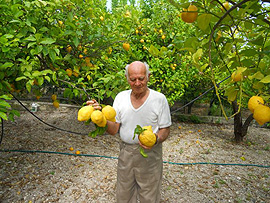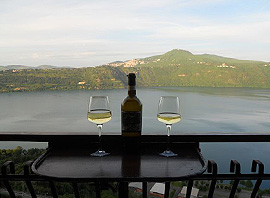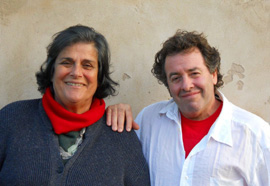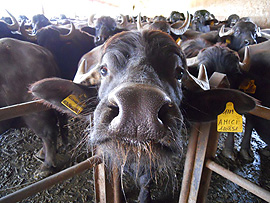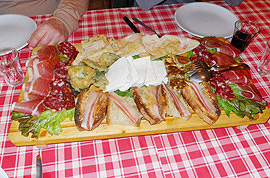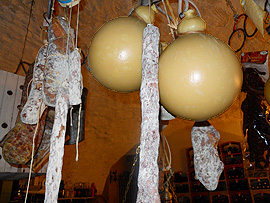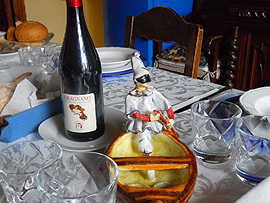The phone call came, “Francesca’s getting married!” Delighted, we made plans and returned to Puglia and my beloved Rodi Garganico. Thank you Francesca, daughter of Nando and Anna, granddaughter of Sparta and Giovanni, longtime friend of our daughter Sarah.

Though our visit was short, it as fantastically fun. Have you ever heard anything about an Italian wedding? What they say is true!
It is a feast and celebration that goes long into the night, ending with fireworks. The reception was set in a beautiful valley of the Gargano near Pechici, with strolling grounds and stunning vistas. The antipasti and subsequent courses seemingly went on for miles! Fresh fish, prosciutto, salumi, cheeses, vini, pasta, carne, dolce, un po di musica, la bellazza. We had to walk between courses to keep up! It was a happy reunion with many old and dear friends to catch up with — and great fun to see the young people we had known since they were small children all together still, and on to their adult lives.
We stayed in Rodi where the birds up in the hills overlooking the sea never stopped singing, even at night. I love it in the country side, la campagnia, hanging out with Giovanni and Sparta, now well into their 80’s. Though Giovanni is now 85, he is still working the land.
The land there is blessed, producing olives, oranges, lemons, figs, peaches, apples, pomegranates, grapes, fiori. With sunrises, sunsets, the sound of the sea, what more could you want. A few homemade cannoli, lots of love, offers of young wine and fresh olive oil.
All too quickly Ginny and I were on our way to Le Campestre, an agriturismo with only a few rooms, in the Provincia di Casserta. Close to the village of Castel di Sasso, this place is breathtaking, with a long and rich food history and tradition. The proprietors of this wonderful spot, the Lombardis, are a lovely family, very much in tune with the earth and the tranquility of nature.
Everything that is put on the table comes from their own land. They are the makers of a particular sheep’s milk cheese, Conciato Romano, that dates back to the time of agro-pastoral tradition. Their efforts have been recognized and supported by Carlo Petrini, founder of the Slow Food movement. To wash down the Conciato Romano, the indigenous Casavecchia wine from their vineyard was the only choice needed!
Near Le Campestre is the town of Caiazzo. I had been there years ago and wanted to show Ginny its beautiful, intimate piazza that is shaded by two towering trees. In the town center there is a small pizzeria, Antica Osteria Pizzeria Pepe, that is run by a trio of brothers.
They are the third generation, the pizzeria having been established by their grandfather and then continued by their father. I learned of the pizzeria when reading through Carla Capalbo’s Food and Wine Guide to Naples and Campania. Though the brothers all have full time careers elsewhere, they were not willing to let go of the tradition that had been established by their father and grandfather. I had the good fortune of meeting one of the brothers, Franco. Though it was too early in the day to try one of their pizzas, you could feel the love and respect that Franco has for the pizza and his wish to honor his father and grandfather by not changing the techniques that he and his brothers learned as children. The dough is mixed by hand, not by machine. The blend of flours used for the dough varies according to the weather. They do not depend on a commercial bakers yeast, a lievito madre is their foundation. Come October, I hope to be in residence with them for a couple of weeks.
On to Rome where our last full day we saw a stunning exhibition of Caravaggio, the pictures remarkably fresh and still powerful. Though we have seen his work before in Italy, Ginny remarked on the poignant sense of self portraiture that emanated throughout each work, and the curatorial expertise in lighting the work from the same angle that the inner light of the paintings were painted from, creating maximum impact. What a genius. Though leaving Italy is always sad, I always look forward to our final stop prior to departure. Castel Gandolfo, just outside of Rome, is truly magical.
Situated high above a volcanic lake, this is where a succession of Popes have summered for hundreds and hundreds of years. We have a favorite ristorante, Bucci, and a lovely intimate hotel, recently remodeled, with a view of the lake, called Hotel Castel Gandolfo. It is a prefect ending every time, allowing us to ease out of Italy.



